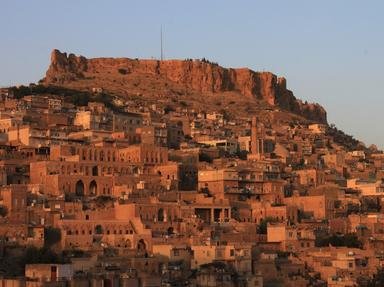Quiz Answer Key and Fun Facts
1. The annual flooding of the rivers in Mesopotamia and the subsequent dry weather that followed, prompted the ancients to develop a system of irrigation - one of the first in the world. Which rivers provided the much needed water in Mesopotamia?
2. The ancient people in Mesopotamia invented the oldest form of writing known in the world today, which is called cuneiform. Which of the following terms describes cuneiform writing?
3. The annual flooding of the rivers in Mesopotamia made it necessary to invent some sort of calendar in order to predict the flood. What type of calendar was primarily used first by the ancient people in Mesopotamia?
4. Ancient Mesopotamians studied the stars and devised a base 60 number system. What is this type of system called?
5. The Sumerians who lived in ancient Mesopotamia are historically given credit for inventing the wheel. What evidence seems to prove this assumption?
6. The ancient Mesopotamia were great scientists, and the Chaldeans who lived there are given credit for which of the following?
7. Which of the following proves the existence of doctors and surgeons in ancient Mesopotamia?
8. While some say this mathematical concept was invented in India, others claim that it came from the ancient Babylonians. Name the concept.
9. The ancient Mesopotamians are known for their mathematical and engineering abilities, which they used in constructing great buildings. Which of the following architectural devices was NOT used in Mesopotamia?
10. Which of the following inventions did NOT come first from ancient Mesopotamia?
Source: Author
ponycargirl
This quiz was reviewed by FunTrivia editor
bloomsby before going online.
Any errors found in FunTrivia content are routinely corrected through our feedback system.

